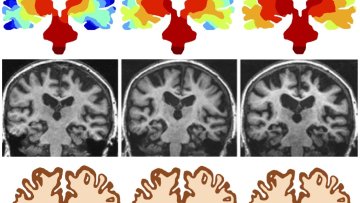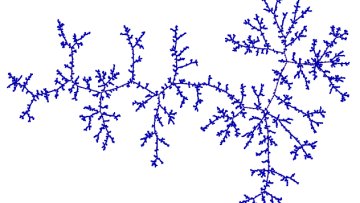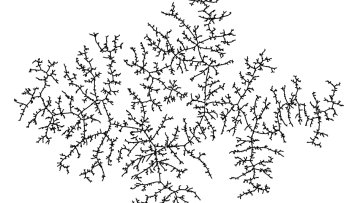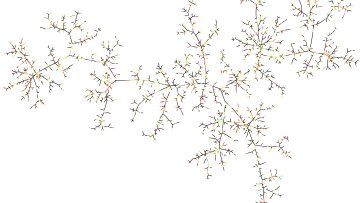Neurodegenerative diseases such as Alzheimer’s or Parkinson’s are devastating conditions with poorly understood mechanisms and no known cure. Yet a striking feature of these conditions is the characteristic pattern of invasion throughout the brain, leading to well-codified disease stages visible to neuropathology and associated with various cognitive deficits and pathologies.
Information Highways and Navigating the Network
Abstract
Recovery of reaction pathways under the DCSC framework.
16:00
Definably simple groups in valued fields
Abstract
I will discuss joint work with Gismatullin, Halupczok, and Simonetta on the following problem: given a henselian valued field of characteristic 0, possibly equipped with analytic structure (in the sense stemming originally from Denef and van den Dries), describe the possibilities for a definable group G in the valued field sort which is definably almost simple, that is, has no proper infinite definable normal subgroups. We also have results for an algebraically closed valued field K in characteristic p, but assuming also that the group is a definable subgroup of GL(n, K).
16:00
Projective geometries arising from Elekes-Szabó problems
Abstract
I will explain how complex varieties which have asymptotically large intersections with finite grids can be seen to correspond to projective geometries, exploiting ideas of Hrushovski. I will describe how this leads to a precise characterisation of such varieties. Time permitting, I will discuss consequences for generalised sum-product estimates and connections to diophantine problems. This is joint work with Emmanuel Breuillard.
16:00
Standard conjectures in model theory, and categoricity of comparison isomorphisms
Abstract
abstract:
In my talk I shall try to explain the following speculation and present some
evidence in the form of "correlations" between categoricity conjectures in
model theory and motivic conjectures in algebraic geometry.
Transfinite induction constructions developed in model theory are by now
sufficiently developed to be used to build analogues of objects in algebraic
geometry constructed with a choice of topology, such as a singular cohomology theory,
the Hodge decomposition, and fundamental groups of complex algebraic varieties.
Moreover, these algebraic geometric objects are often conjectured to satisfy
homogeneity or freeness properties which are true for objects constructed by
transfinite induction.
An example of this is Hrushovski fusion used to build Zilber pseudoexponentiation,
i.e. a group homomorphism $ex:C^+ \to C^*$ which satisfies Schanuel conjecture,
a transcendence property analogous to Grothendieck conjecture on periods.
I shall also present a precise conjecture on "uniqueness" of Q-forms (comparison isomorphisms)
of complex etale cohomology, and will try to explain its relation to conjectures on l-adic
Galois representations coming from the theory of motivic Galois group.
16:00
On a question of Babai and Sós, a nonstandard approach.
Abstract
In 1985, Babai and Sós asked whether there exists a constant c>0 such that every finite group of order n has a product-free set of size at least cn, where a product-free set of a group is a subset that does not contain three elements x,y and z satisfying xy=z. Gowers showed that the answer is no in the early 2000s, by linking the existence of product-free sets of large density to the existence of low dimensional unitary representations.
In this talk, I will provide an answer to the aforementioned question by model theoretic means. Furthermore, I will relate some of Gowers' results to the existence of nontrivial definable compactifications of nonstandard finite groups.
Quantifying Ambiguity Bounds Through Hypothetical Statistical Testing
Abstract
Authors:
Anne Balter and Antoon Pelsser
Models can be wrong and recognising their limitations is important in financial and economic decision making under uncertainty. Robust strategies, which are least sensitive to perturbations of the underlying model, take uncertainty into account. Interpreting
the explicit set of alternative models surrounding the baseline model has been difficult so far. We specify alternative models by a stochastic change of probability measure and derive a quantitative bound on the uncertainty set. We find an explicit ex ante relation
between the choice parameter k, which is the radius of the uncertainty set, and the Type I and II error probabilities on the statistical test that is hypothetically performed to investigate whether the model specification could be rejected at the future test horizon.
The hypothetical test is constructed to obtain all alternative models that cannot be distinguished from the baseline model with sufficient power. Moreover, we also link the ambiguity bound, which is now a function of interpretable variables, to numerical
values on several divergence measures. Finally, we illustrate the methodology on a robust investment problem and identify how the robustness multiplier can be numerically interpreted by ascribing meaning to the amount of ambiguity.
Christina Goldschmidt from the Department of Statistics in Oxford talks about her joint work with Louigi Addario-Berry (McGill), Nicolas Broutin (Paris Sorbonne University) and Gregory Miermont (ENS Lyon) on random minimum spanning trees.
On the Monge-Ampere equation via prestrained elasticity
Abstract
In this talk, we will present results regarding the regularity and
rigidity of solutions to the Monge-Ampere equation, inspired by the role
played by this equation in the context of prestrained elasticity. We will
show how the Nash-Kuiper convex integration can be applied here to achieve
flexibility of Holder solutions, and how other techniques from fluid
dynamics (the commutator estimate, yielding the degree formula in the
present context) find their parallels in proving the rigidity. We will indicate
possible avenues for the future related research.





